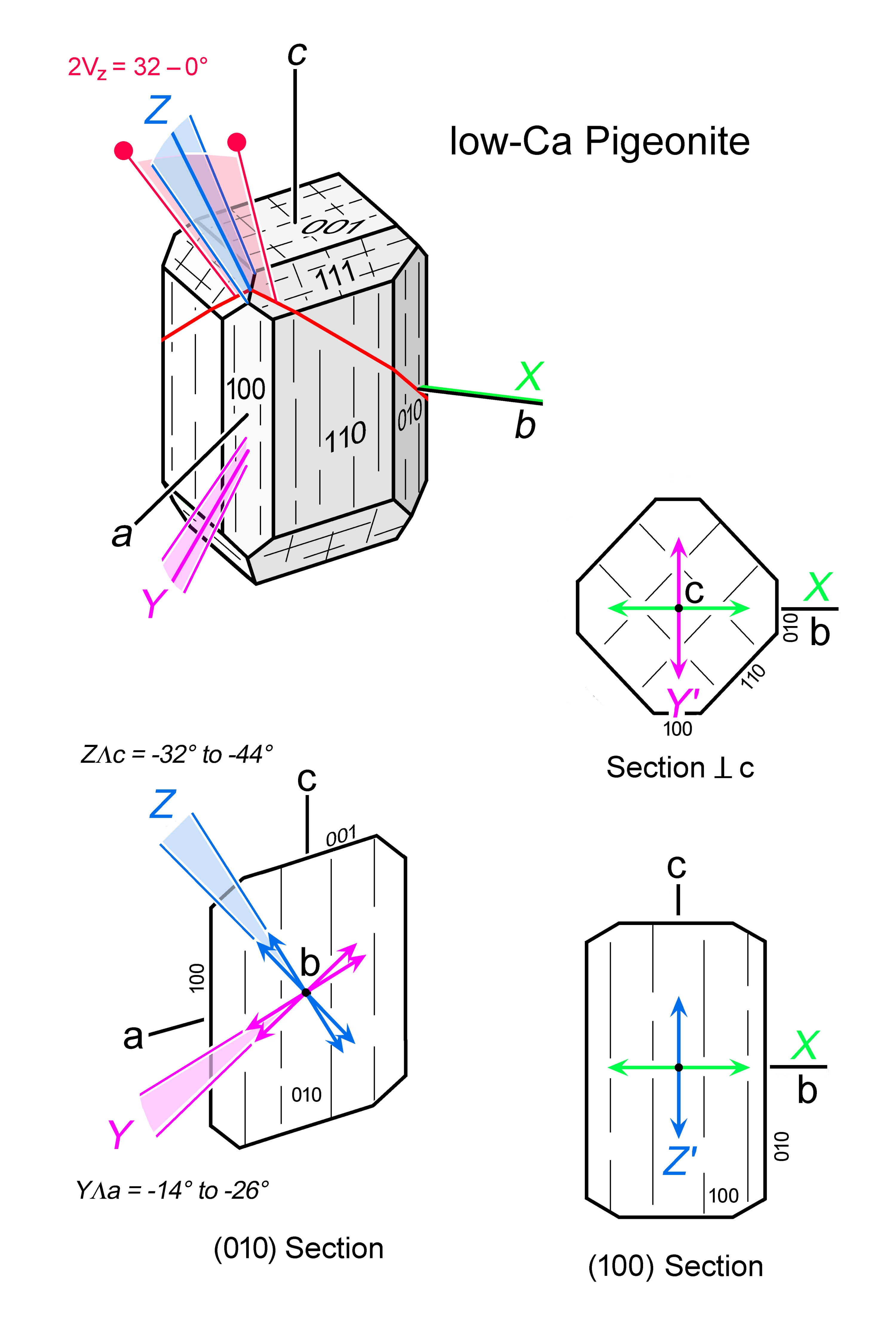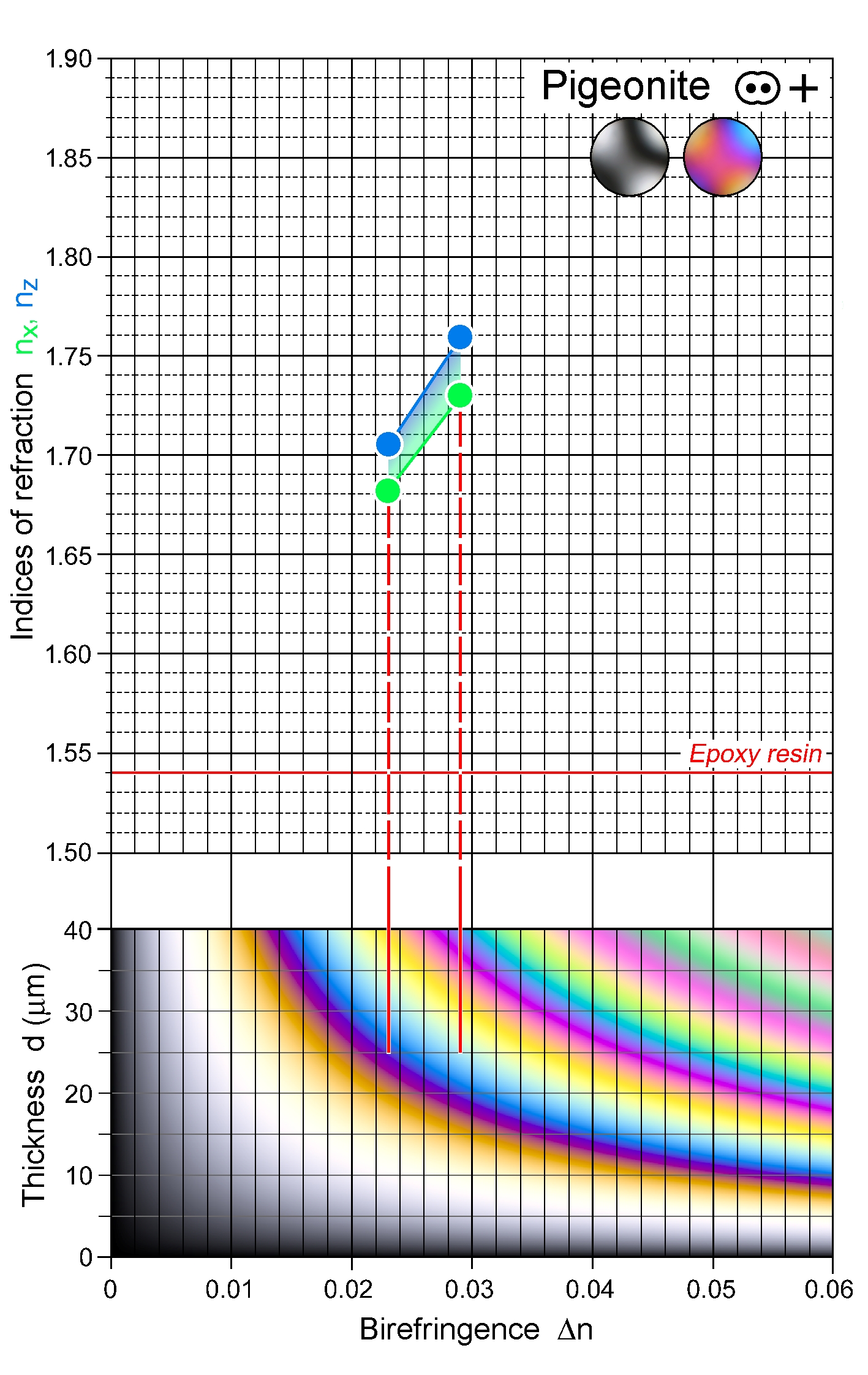|
| Formula | (Mg,Fe,Ca)2Si2O6 |
| | Optic class & sign | Biaxial positive |
| | Optical orientation | a near Y, b = X, c at a high angle to Z (low Ca); a near X, b = Y (higher Ca) |
| | Optical plane | Orthogonal to (010) for Ca-poor pigeonite, (010) for higher-Ca pigeonite |
| | Relief | High |
| | Refractive indices | nx = 1.682 -1.732
|
|
ny = 1.684 -1.732
|
|
nz = 1.705 -1.757
|
|
| n increases with Fe content |
| | Birefringence (max.) | 0.023 - 0.029 |
| | | Δn decreases with Fe content |
| | Optic Angle
| 2Vx
|
| | 2Vz
= 0 - 32° |
| | Sign of elongation | Due to large angle between c and Z, not readily applicable |
| | Interference figure | May appear essentially uniaxial if close to 10 mol% CaSiO3 |
| | Colour / pleochroism | Colourless to pale green or brown. Colour intensity and pleochroism increase with Fe content. Maximum absorption ∥ Y. |
| | Zoning | |
|
|
| Form | Habit | Granular to elongate-prismatic |
| | | Surface | Anhedral to euhedral in a volcanic rock’s groundmass; euhedral phenocrysts |
| | Cleavage | 2 sets {110} distinct, at 93 and 87° (seen in sections ⊥ c); parting on {001}. In prismatic sections, the traces of the two principal cleavage sets are parallel. |
| | Twinning | Simple or multiple on {100} |
| | Extinction | Inclined, cɅZ = 40- 44° in (010) sections; c ∥ cleavage traces and prism faces. In the absence of (001) crystal faces, parting on {001} allows to identify the obtuse angle β within which Z is located. Symmetrical extinction to {110} cleavage and {110} faces in {001} sections. |
|
|
| Reaction textures | Coronas on, or intergrowths with, augite and orthopyroxene |
| | Alteration / decomposition | Secondary amphiboles (tremolite-actinolite), chlorite |
|
|
| Occurence | Ign | Intermediate to mafic volcanics and shallow intrusives; original pigeonite in slowly cooled plutonic rocks is commonly not preserved, but inverted to orthopyroxene (see also below). |
| | | Met | |
| | | Sed | |
| | | Hyd | |
| | | Other | |
|
|
| Distinctive properties | Moderate Δn, large extinction angles in maximum birefringence sections, characteristic pyroxene cleavage observed in sections ⊥ c. 2V is smaller than in Ca-rich pyroxenes. |
| | Additional comments | Compositional zoning is common. On slow cooling, pigeonite exsolves augite forming (001)-parallel lamellae; with the host phase turning into orthopyroxene. This is referred to as ‘inverted pigeonite’. |
|
|

 Images
Images 


 Images
Images 
